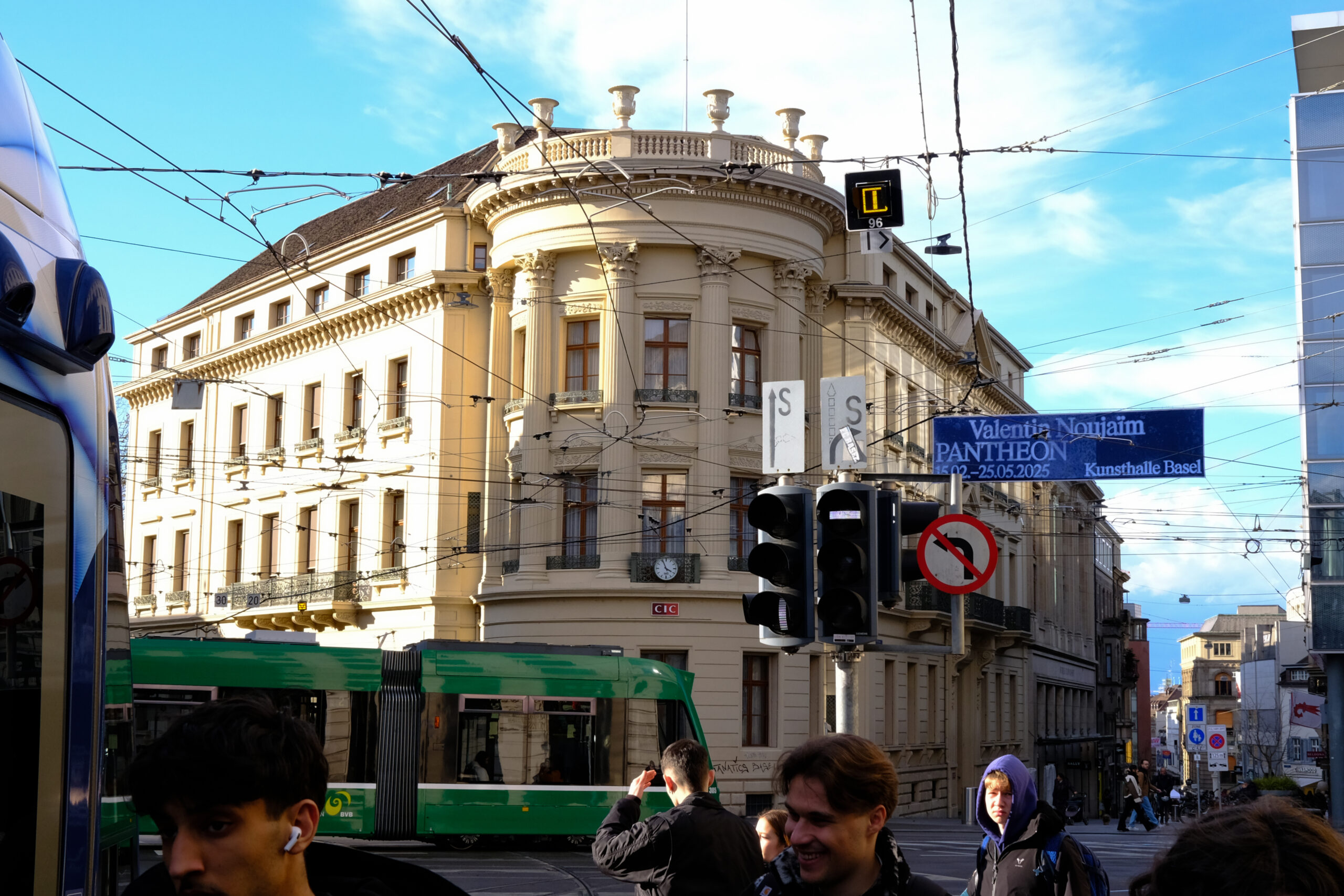Assignment 1 – Exploring Sound Qualities in Architectural Design
Sound of BASEL – Marcus Tse FS25
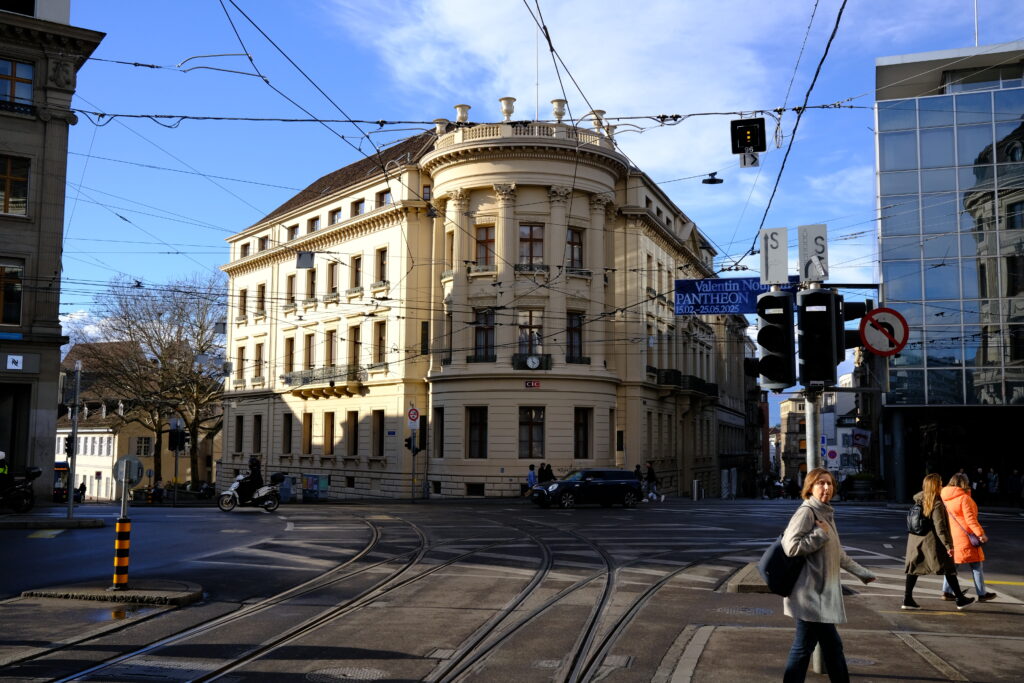
For this task, I went to Basel and recorded the sounds of the public spaces. Of which, the first space I went to was the busy public street outside of the Kunstmuseum Basel. Where people’s voice and footsteps, cars and trams filled the space. The function of this space is mainly for transversing and public gathering.
The most interesting part of this audio is the audio visual you can hear/see of the bikes in Basel. From left to right, and from far to near then far again. I would describe the sound as lively, large, open, and loud and Sizzly.
Still around the area, but in the back streets. Although it is quite a lot more quiet. There were these really interesting construction sound.
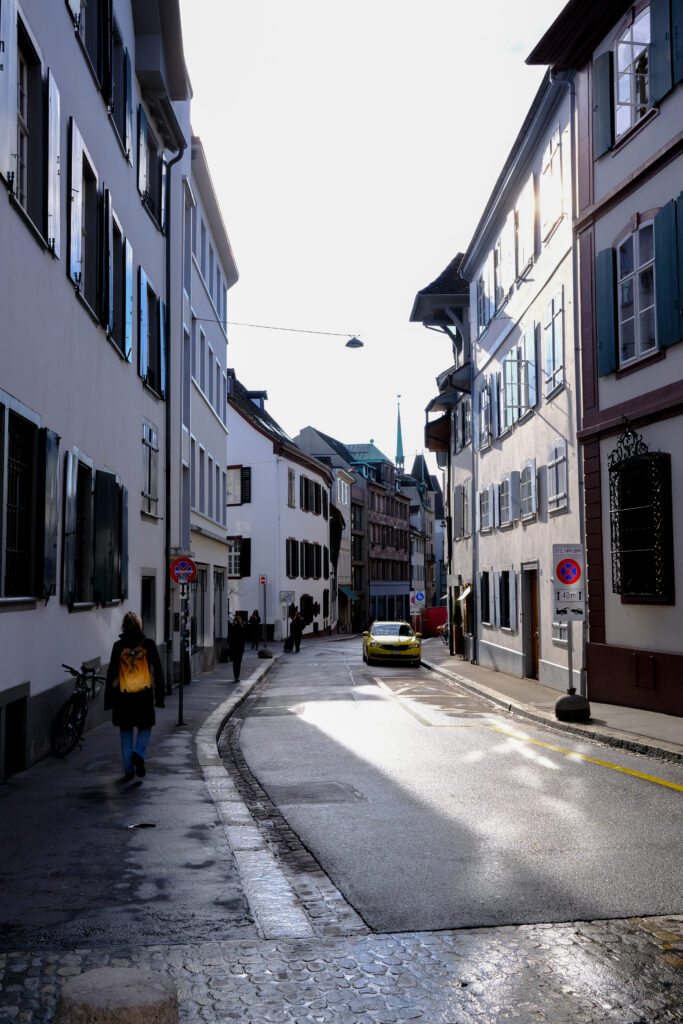
Whilst I was walking, I stumbled upon a small construction site – possibly for renovation of a room and a whole building. However, if this sound was placed out on the main street, such as a road side construction. I would not have noticed it that as the public main street sound may muffle the sounds. Just like how people’s conversations cannot be heard on the main street. I would describe this space as Boomy, Echoey, and sometimes harsh.
For the last space, I have recorded the Migros canteen of BASEL. The space is for gathering, eating, and also shopping. People have a lot of conversations there, making the space quite loud, and it is often quite difficult to focus on one person’s voice as the space is filled with noises.
I would describe this space audio as boxy, live, muddy, sizzly, and very dense.
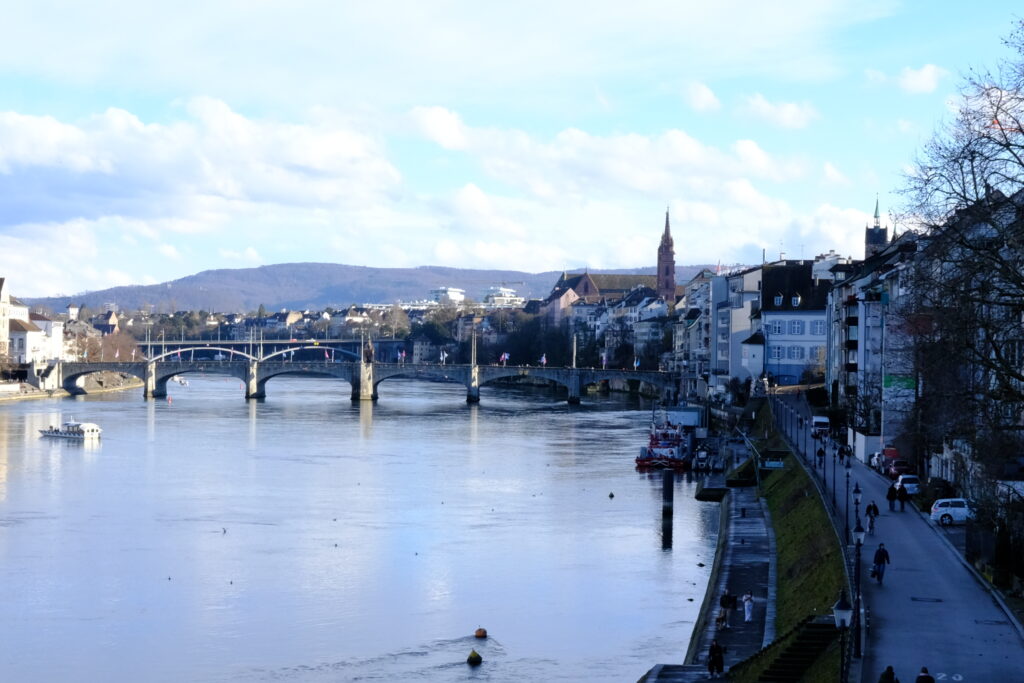
Thank you!
Assignment 2 – Exploring the Emotional Impact of Everyday Sounds
A Busy Intersection
Soundscape Analysis of a Busy Street
Description of the Situation and Sounds Present This recording captures the soundscape of a busy street, featuring both human and mechanical noises. The most prominent sounds include a car approaching and then moving away, its engine noise gradually fading into the distance. Shortly after, a faint male voice emerges but is quickly overshadowed by the distinct laughter of a girl, which dominates the auditory scene. The laughter is then muffled by the sound of another car engine, which momentarily overpowers the human voices before fading again into the background, allowing a general conversation to resurface.
Emergent Sounds
- The approaching car’s engine is one of the most emergent sounds, as it moves dynamically from soft to loud and then fades away.
- The girl’s laughter is another emergent sound due to its suddenness and distinctiveness in pitch and volume.
Catchy Sounds (Attention-Grabbing)
- The girl’s laughter is the most attention-grabbing due to its contrast with the more monotonous background noise.
- The engine sounds, particularly as the car approaches, also command attention due to their increasing volume and presence.
Most Likely Overheard Sounds
- The faint conversation in the background is likely overheard but not fully distinguishable.
- The initial male voice, though present, is overshadowed and blends into the overall soundscape.
Emotional Impact and Perception The sounds in this environment create a dynamic and evolving atmosphere. The approaching car generates a sense of movement and anticipation, possibly even mild tension if perceived as coming too close. The laughter introduces a sudden contrast, evoking a sense of liveliness or warmth, though it also disrupts the previous balance. The engine of the second car, which muffles other sounds, momentarily creates a feeling of suppression or intrusion, after which normalcy is restored as the background conversation returns.
Volume, Frequency, and Context Effects
- Volume: The changes in loudness, particularly with the car engine and laughter, play a crucial role in dictating which sounds dominate at any given moment.
- Frequency: The lower frequencies of the car engine contrast with the higher frequencies of human voices and laughter, creating a layered auditory scene.
- Context: The context is an important factor as it alters the way sound is reverberated around the surrounding. For example, if I were to record this audio inside a parking lot, the sound of the cars and people would have been bouncing around and lingers a lot longer. Furthermore, the overlapping of different noises in a quick secession is only possible at a busy intersection with high level of activities.
Discomfort/Alert:
I must admit, the noise that bothered me the most was the girl’s laughter. While paradoxically being the noise I found the most interesting. I think the sudden change in pitch really threw myself off while I quite like the noise of cars so I don’t mind that too much.
A Quiet Park
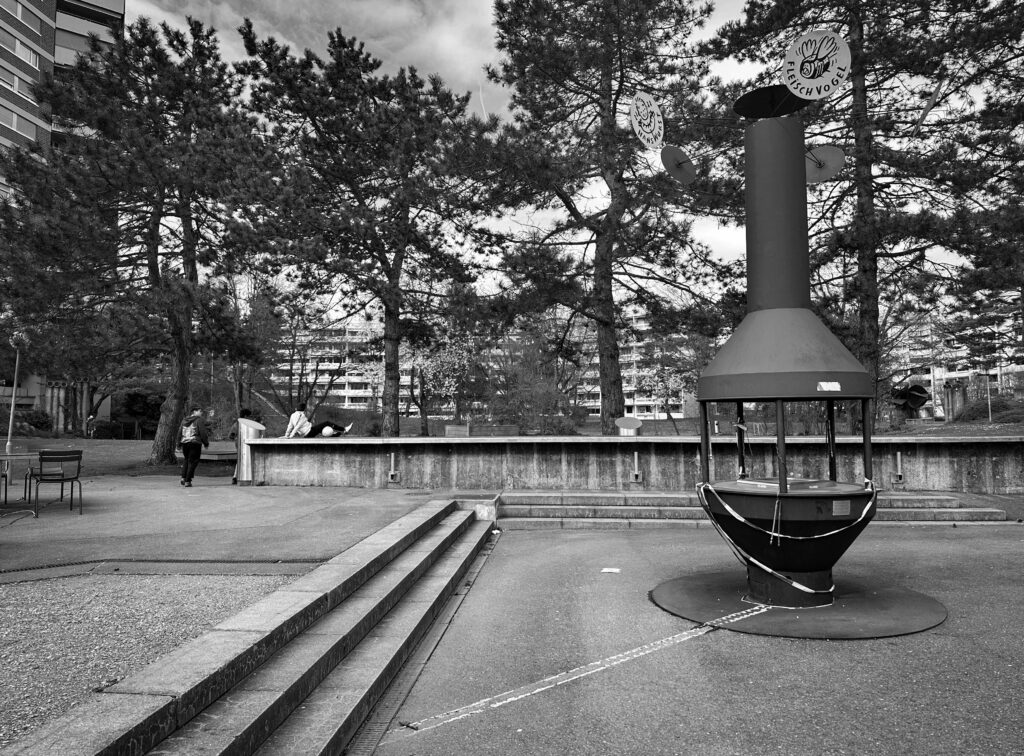
This audio was recorded inside a small quiet park near my residence.
This recording was recorded on a quite Sunday. In this park, there was a family playing soccer with their kids and a few people hanging around the connivance store close by, of which was surprising as they were suppose to be closed on Sunday. Additionally to these main sounds, you could hear the faint noise of birds chipping and also pedestrians walking through the park to get to their residence… What’s interesting is that I also attempted to record from the same location but at night. And there was absolutely no sound at all, only wind sound and faint noise of trams and cars from the distance. Quite eerie.
Emergent Sounds
The emergent sound is the people walking around the park as you can hear them coming closer and further away as they walk pass the microphone. And also the sound of the tram and cars.
Catchy Sounds (Attention-Grabbing)
The sound of the kids and parents playing soccer is the most catchy sound as they projects a boom with kicked.
Emotional Impact and Perception
Emotionally, this recording evokes a chill and calming Sunday afternoon where people are just relaxing.
Volume, Frequency, and Context Effects
The volume of the recording is moderate and mostly quiet as there are less activities happening on site. Frequency is low as most of the sound is generated through the ground, which dampens the sound. The higher frequency sounds are the vocals of people’s chattering and also the sound of the kids. However, the site is also quite windy, and also quite enclosed as it is mostly surrounded by residential buildings. Nonetheless, even though the surrounding is enclosed, the actual park itself is quite opened to the public, which allows wind and traffic (people) to flow in. Due to the enclosed nature of the surrounding and low traffic of the site sound is quite easily heard.
Discomfort/Alert:
This would definitely be the wind sound as it creates an uncomfortable white noise.
Assignment 3 – Empirical and numerical estimation of
room acoustic properties
SPACE 1: MY ROOM


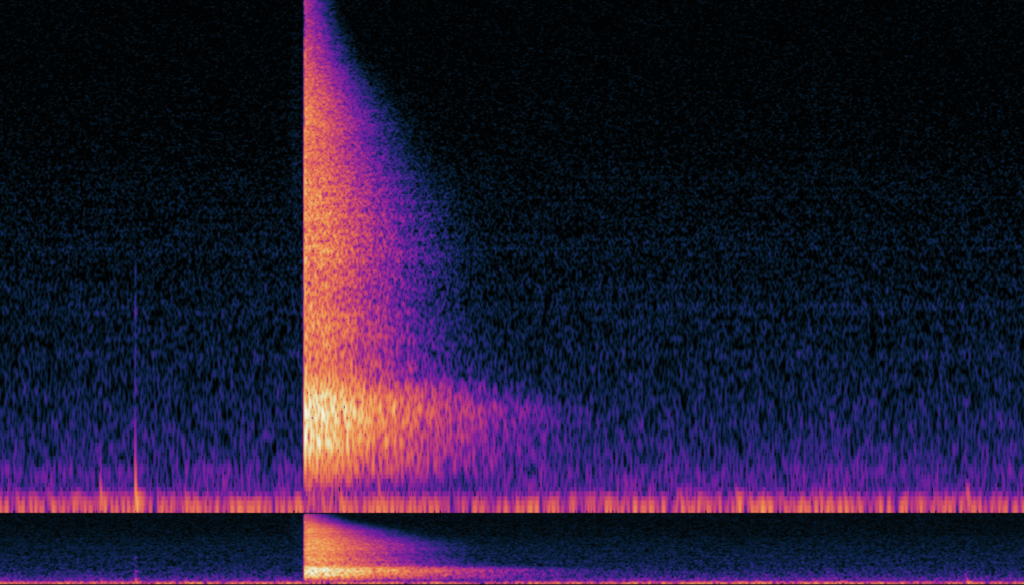
Reverb time: 0.25
With carpet and cloth material around the room
SPACE 2: FRIEND’S ROOM

Reverb Time: 0.63
Flat surface room with no absorber besides a bed
SPACE 3: STAIRS
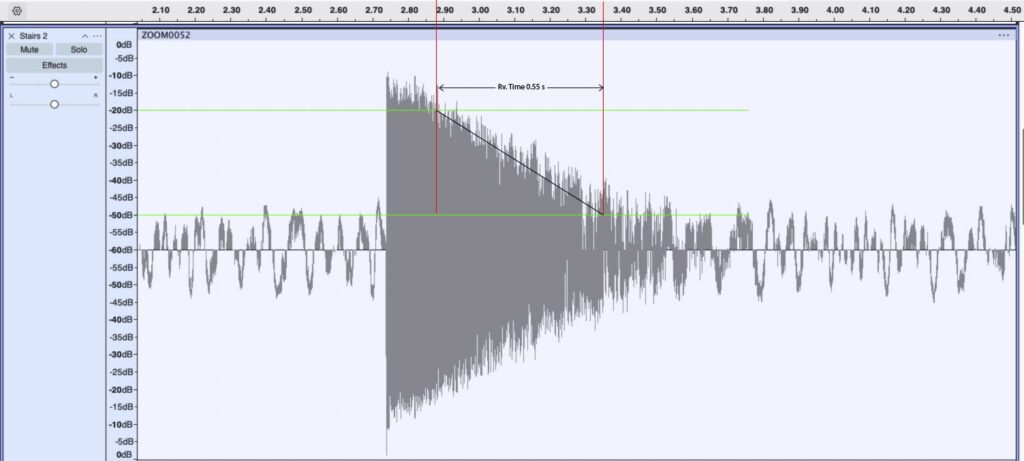
Reverb Time: 0.55
Final assignment
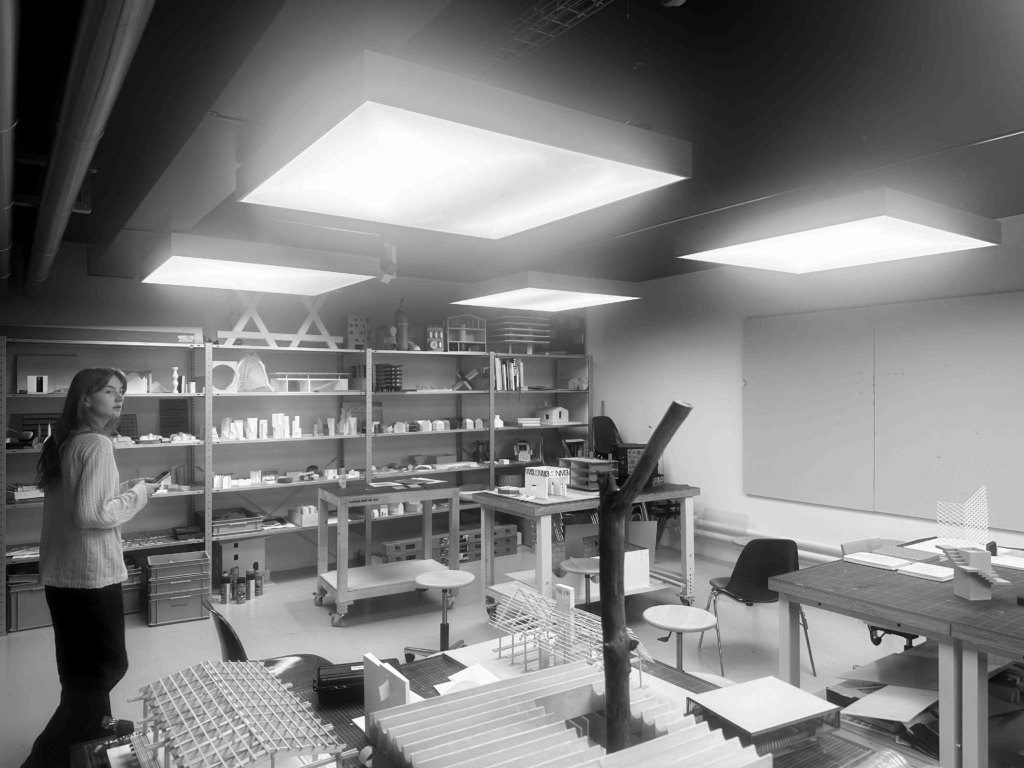
Room – HIL B61
The room in question is the Model and Design workspace of Raplab (HIL B61). It is a multipurpose room that is used for lectures and as a workspace for model building. When used for lectures, the speaker is usually at the corner of the room, next to the projection screen, and the students are sitting in rows in the middle of the room. The big worktables are pushed to the back of the room to make space for the chairs. When used as a workspace, all chairs are stacked and placed at the back of the room, and the tables are grouped in pairs and placed in the middle of the room, leaving room around them for people to sit and walk.
In person room acoustic:
The room’s acoustic is a very boomy, bouncy, and loud room with high reverberation noticeable by normal speaking. The sound reflected is also relatively high frequency. These results are probably due to the hard surface used around the whole room – hard painted concrete. Additionally, using the recorder – the reverberation sound is actually increased when the balloon is popped at the speaker’s position and mic at the student position. Furthermore, I don’t think the boards on the wall are preforming much… I hypothesises that if it was a shaped acoustic foam, it would actually absorb and defuse the sound in the room. The room maybe especially loud when students start to get “hands on” when making the models or breaking materials…
Room Spec:
Room Surface Area: 85.5 m2
Sidewalls: 65m2
Front/Rear: 41m2
Floor/Ceiling: 171m2
Total Area: 276m2
Room Volume: 237m3
Ceiling Material: Concrete
Floor Material: Concrete
Walls: Concrete
Sound Analysis
In person acoustic experience:
Balloon Test Recordings: MAP of recording and sound source
RECORDING 1:
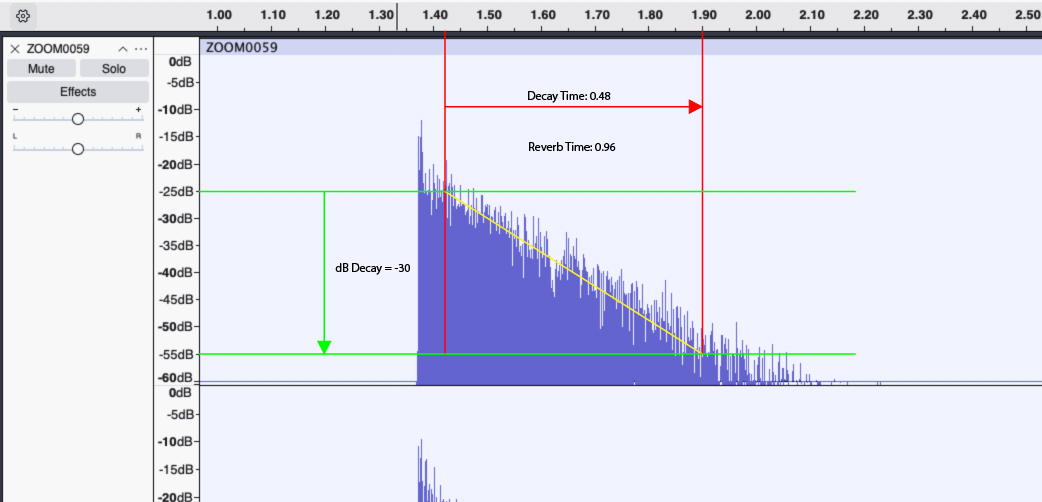
Reverberation Time of 0.96s
RECORDING 2:
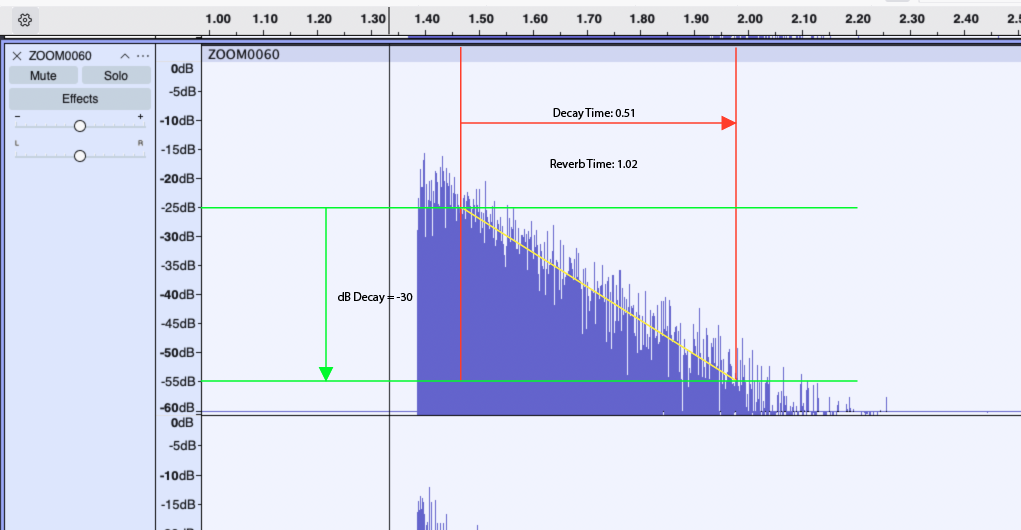
Reverberation Time of 1.02s
RECORDING 3:
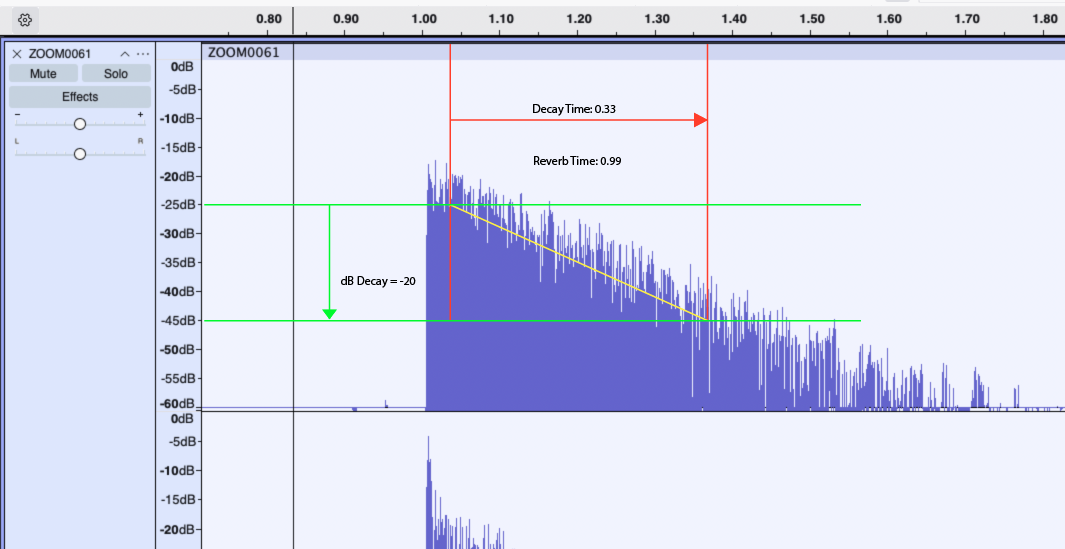
Reverberation Time of 0.99s
Average Reverberation Time: 0.99s
SIA Norm and RT Target
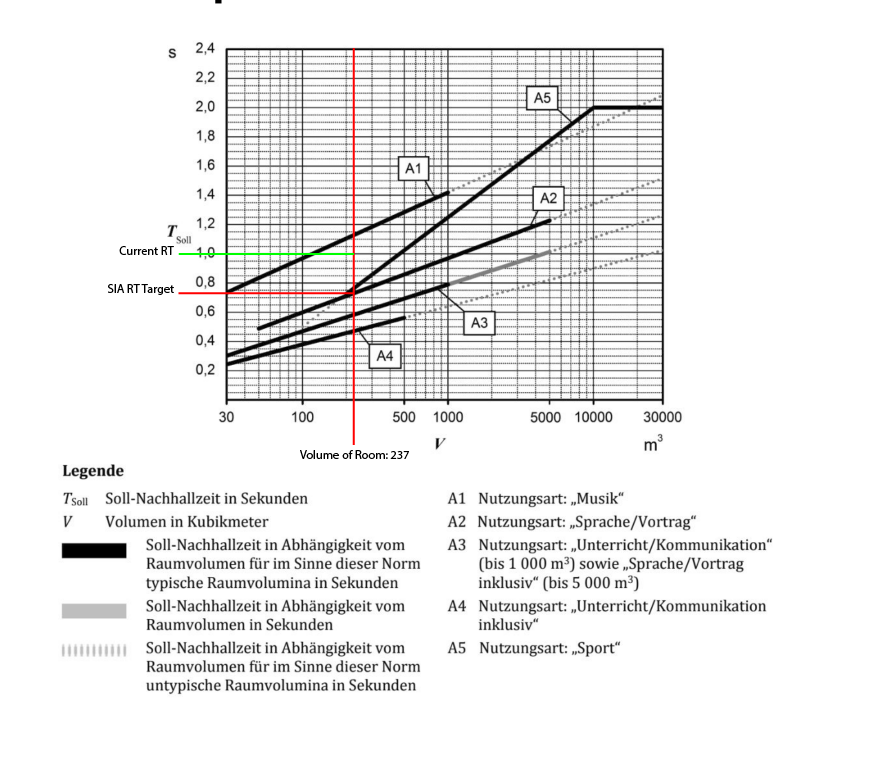
A3 is the Target Range for “Teaching/Communication” and ‘Language/Lecture inclusive” – which is the appropriate function for Room HIL B61
SIA Norm RT suggestion is = 0.74s
Hence there is a difference of (0.74-0.99) –0.25s in RT for it to be acoustically appropriate for its use.
RT60 Calculator 10Log
After finding out the RT target from the SIA guide. We can do some simple simulation and calculation to see how interventions can reduce the RT and the different frequencies of which the balloon test didn’t accounted for.

For reference, this is the RT graph based on the same room with concrete architectural materials without furnitures. Hence the RT indicated will be longer than the real world recorded test.
Interventions!!!

This is a sketch of the potential intervention we can employ to reduce the reverberation time and resonance sound, especially the high frequency.
Strategy 1: Perforated Timber panels on the ceiling to reduce resonance vibration in the room. This should reduce RT on the mid-high frequency scale. Hence improving speech legibility both from the lecturer and also between students when performing group work.
Strategy 2: Shaped Acoustic Foam on the long side of the wall. This is to absorb sound – reduce RT and reach RT target, but also to deflect the sound waves so it doesn’t create the horizontal and vertical echo – reducing resonance and improve speech clarity.
Strategy 3: Acoustic fabric board at the back of the room to absorb sound horizontally (plan view) – reduce RT and echo – Improve clarity of lecturer’s speech.
Strategy 4: Acoustic foam (tower or panel) on the lecturer’s side of the room. This strategy is employed if the RT is required to further reduce to reach Target RT. However, this should not only reduce RT but also improve clarity speech for the lecturer’s own listening position – and also this will create a complete surrounded absorption of sound for the room (plan view).
Here are the results of the intervention through the online calculator.


RT after the interventions are added. You can see that there is a moderate drop in RT around all frequency but in particularly a significant drop in the high frequency – of which is what is targeted. Showing the success of the intervention on the online simulator.

